Water dragons (genus Intellegama), with their vibrant colors, spiky crests, and semi-aquatic lifestyle, have captivated the hearts of reptile enthusiasts worldwide. These hardy lizards, native to Australia and southeastern New Guinea, come in a variety of species, each with its own unique characteristics. While not the most cuddly companion, water dragons can develop fascinating personalities and reward dedicated owners with years of enjoyment. However, proper care is essential to ensure their health and well-being in captivity. Unlike more common pet reptiles like bearded dragons or leopard geckos, water dragons have specific needs that must be met to thrive. This comprehensive guide delves into the world of water dragon care, exploring the essential aspects of providing a suitable habitat, maintaining a healthy diet, and understanding their behavioral needs.
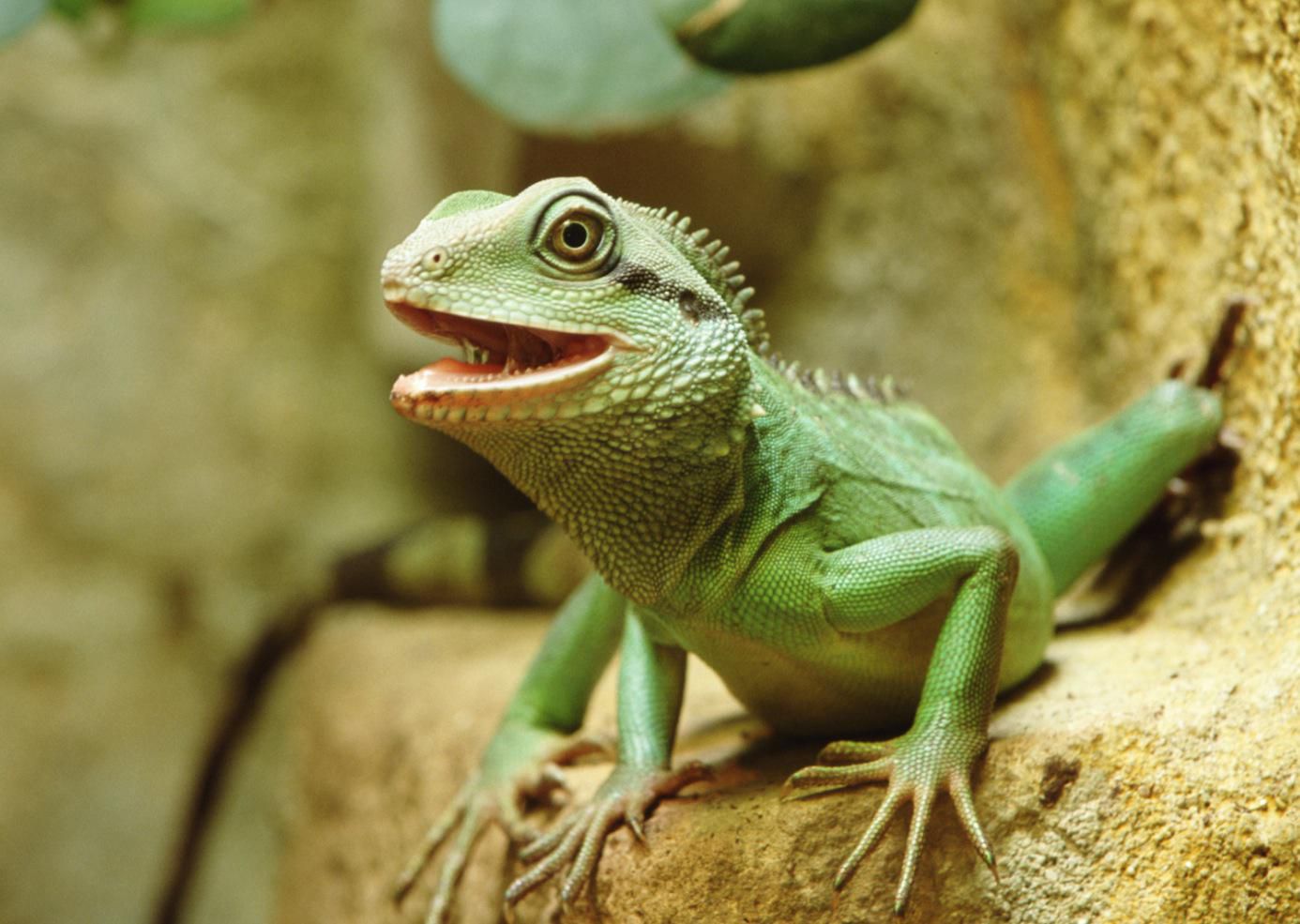
-
Introduction
- The allure of water dragons goes beyond their captivating appearance. These intelligent lizards exhibit a wide range of behaviors, from basking under heat lamps to gracefully swimming in their water features. Their arboreal nature, meaning they spend a significant amount of time climbing, adds another layer of intrigue as they navigate their enclosures.
- Owning any pet is a significant responsibility. Water dragons, while generally hardy, require specific care to live a long and healthy life. This guide will equip you with the knowledge to create a thriving environment for your water dragon companion. Remember, proper care goes beyond simply providing food and water; it encompasses creating a stimulating habitat, understanding their dietary needs, and recognizing signs of potential health issues.
- This guide will explore the following essential aspects of water dragon care:
- Understanding the different water dragon species and their unique needs.
- Creating a suitable habitat that replicates their natural environment.
- Providing a balanced and nutritious diet to fuel their growth and vitality.
- Maintaining their health and well-being through regular veterinary care and preventive measures.
- Building trust and rapport through gentle handling techniques.
- Considering the legal and ethical implications of water dragon ownership.
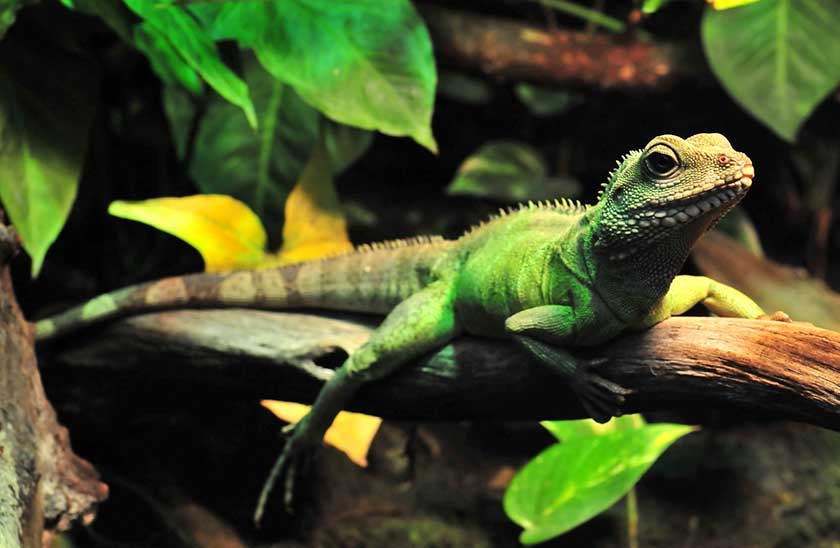
-
Understanding Water Dragon Species
- Several water dragon species are available in the pet trade, each with distinct characteristics and care requirements. Some popular choices include:
- Chinese Water Dragon (Intellegama chinensis): This medium-sized species, reaching lengths of up to 3 feet, is known for its vibrant green coloration and prominent dorsal crest.
- Gila Water Dragon (Intellegama iguana): This aptly named species, native to New Guinea, has a stockier build and a more muted coloration compared to the Chinese water dragon.
- Woma Water Dragon (Intellegama lesueurii): This smaller species, reaching only about 18 inches in length, is known for its shy demeanor and beautifully patterned body.
- Distinguishing features can help you identify the specific water dragon species you’re considering. Look for details like size, coloration, crest shape, and tail length. Understanding these variations will ensure you can provide the appropriate care for your chosen species.
- Selecting the right water dragon for your lifestyle is crucial. Consider factors like available space, your experience level with reptile care, and the temperament of the different species. For example, Chinese water dragons are generally more social and adaptable, while Woma water dragons are better suited for experienced owners who can provide a quiet and low-stress environment.
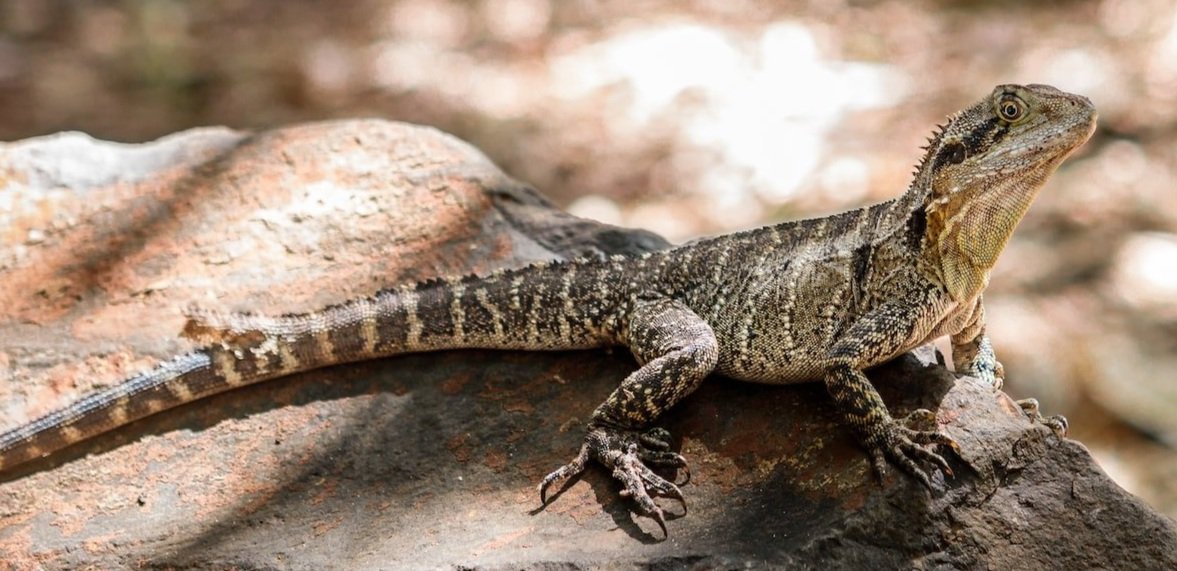
Creating a Suitable Habitat: Replicating Their Natural Environment
- Water dragons are active creatures that require ample space to climb, explore, and bask. The minimum enclosure size for an adult water dragon should be at least 5 feet long, 3 feet deep, and 5 feet tall. Larger enclosures are always better, especially for larger species.
- The substrate, the material that lines the bottom of the enclosure, should be safe and appropriate for digging and burrowing. Popular options include paper towels, reptile carpet, or a mixture of topsoil and sand. Avoid using materials like wood chips or corn cobs, as they can harbor bacteria and cause impaction if ingested.
- Water dragons are ectothermic, meaning they rely on external sources for heat. Provide a basking spot with a heat lamp that reaches temperatures between 90-100°F (32-38°C). A cooler area on the opposite side of the enclosure should maintain a temperature in the mid-70s°F (mid-20s°C). Use a thermometer to monitor temperatures and ensure proper gradients throughout the enclosure.
- Water dragons are semi-aquatic and require a water feature to cool off, swim, and soak. A large, shallow pool or pond should take up about one-third of the enclosure floor space. Ensure the water D. (continued) …is clean and chlorine-free. Change the water regularly and provide a ramp or rocks for your water dragon to easily enter and exit the water feature.
- Furnish the enclosure with branches, climbing structures, and live or artificial plants to provide hiding places, basking spots, and opportunities for climbing. Arrange the elements to create a visually stimulating and enriching environment. Live plants can help maintain humidity levels, but choose non-toxic varieties safe for your water dragon to ingest if they nibble.
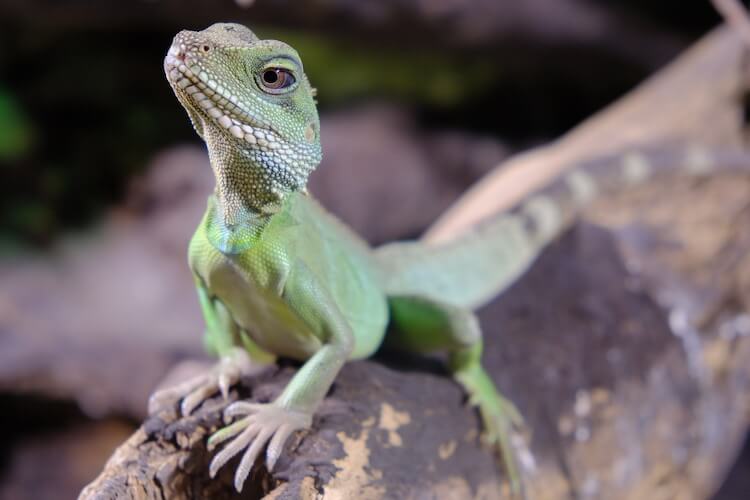
-
Nutrition
- A water dragon’s diet should be primarily composed of live insects, such as crickets, roaches, and mealworms. The size of the prey items should be appropriate for the size of your water dragon. As a general rule, the feeder insect shouldn’t be wider than the space between your water dragon’s eyes.
- Supplementation with a variety of vegetables and fruits is essential for a balanced diet. Offer chopped vegetables like leafy greens, bell peppers, and carrots, as well as diced fruits like apples, mangoes, and berries. Dust insect feeders with a calcium and vitamin D3 supplement a few times a week to prevent nutritional deficiencies.
- Fresh, clean water should always be available in a shallow dish placed away from the food and feces. Monitor water intake and replace it daily to ensure it stays clean and inviting for your water dragon to drink.
- Feeding frequency will vary depending on your water dragon’s age and activity level. Juveniles typically require daily feedings, while adults can be fed every other day or even less frequently. Observe your water dragon’s body condition and adjust feeding amounts as needed.
-
Health and Wellness: Maintaining Their Physical and Mental Well-being
- Regular veterinary checkups are crucial for maintaining your water dragon’s health. Schedule annual exams with a veterinarian experienced in reptile care. These checkups allow for early detection of potential health issues and ensure your water dragon receives proper preventative care.
- Be aware of common signs of illness in water dragons, such as lethargy, loss of appetite, unusual skin discoloration, difficulty breathing, or swollen limbs. Early intervention is key for successful treatment, so don’t hesitate to seek veterinary attention if you notice any concerning symptoms.
- Preventive measures like regular enclosure cleaning, parasite control, and deworming can help prevent illness. Maintain a clean and hygienic environment by removing feces and uneaten food promptly. Consult your veterinarian about appropriate parasite control medications and deworming schedules for your water dragon.
- Understanding your water dragon’s natural behaviors is essential for recognizing signs of stress or discomfort. Water dragons that pace excessively, glass surf, or hide constantly may be experiencing stress. Environmental changes, improper temperatures, or the presence of other animals can all contribute to stress in water dragons.
- Provide a stimulating environment to prevent boredom and behavioral issues. Rotate the arrangement of enclosure elements regularly, offer new hiding spots, and introduce different feeder insect varieties to keep your water dragon engaged and mentally stimulated.
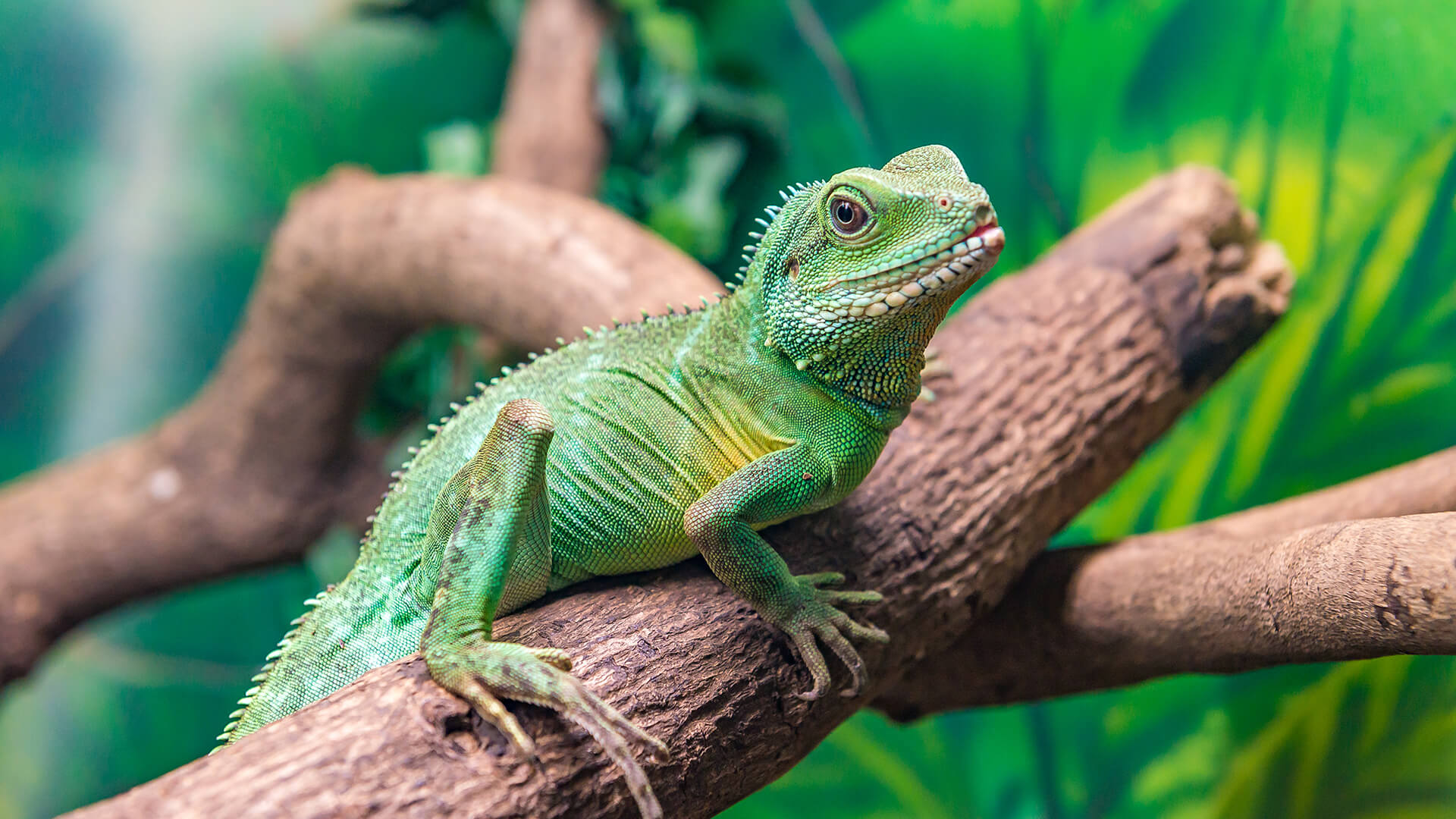
-
Breeding and Reproduction: Understanding the Lifecycle
- Water dragons reach sexual maturity at varying ages depending on the species. Chinese water dragons typically mature around 18 months, while Woma water dragons may take up to 3 years. Consult a breeder or veterinarian for information on the specific maturity timeframe of your chosen species.
- Breeding water dragons in captivity requires careful planning and a deep understanding of their reproductive needs. Pairing compatible individuals of the same species is crucial for successful breeding. Incompatible pairs may exhibit aggressive behavior towards each other.
- Water dragons exhibit elaborate courtship rituals before mating. Males display their crests and perform head bobs to attract females. Understanding these behaviors can help you identify breeding readiness in your water dragons.
- Females lay clutches of several eggs, which they typically bury in a moist substrate. Creating a separate breeding enclosure with a suitable egg-laying substrate is necessary for captive breeding. Incubation temperatures and humidity levels need to be carefully controlled for successful hatching.
- Caring for newborn water dragon hatchlings requires specialized knowledge and equipment. They have specific dietary needs and require a warm, humid environment to thrive. Consider your experience level and resources before attempting to breed water dragons in captivity.
Handling and Interaction: Establishing a Bond
- Water dragons are not typically cuddly pets. They have delicate skin and can become stressed by excessive handling. However, gentle handling techniques can help build trust and rapport. Always support your water dragon’s entire body when picking them up and avoid grabbing them by the tail.
- Building trust takes B. (continued) …time and patience. Start by offering your hand inside the enclosure for your water dragon to investigate at its own pace. Positive reinforcement with treats like feeder insects during these interactions can help create a positive association with human contact.
- Respect your water dragon’s boundaries. If they display signs of stress like hissing, puffing their throat, or flattening their body, back off and try again another time. Forcing interaction will only damage the trust you’re trying to build.
- Supervised interactions with children and other pets are essential. Teach children proper handling techniques and emphasize the importance of gentle interactions. Never leave your water dragon unattended with other pets, as they could be injured or stressed.
- Limit handling to necessary situations like veterinary checkups or enclosure cleaning. Allow your water dragon to spend most of its time basking, climbing, and exploring its environment for optimal well-being.
Legal and Ethical Considerations: Responsible Pet Ownership
- Before acquiring a water dragon, research local regulations regarding reptile ownership in your area. Some regions may have restrictions on specific species or require permits to keep exotic pets.
- Source your water dragon from a reputable breeder who prioritizes the health and well-being of their animals. Avoid pet stores or online sellers with questionable breeding practices. Responsible breeders can provide information on the animal’s lineage and temperament.
- Owning a water dragon is a long-term commitment. These reptiles can live for 10-15 years or even longer with proper care. Ensure you can provide them with a suitable habitat, nutritious diet, and veterinary care throughout their lifespan.
- Consider supporting conservation efforts for wild water dragon populations and their habitats. Several organizations work to protect these fascinating creatures from threats like habitat loss and illegal wildlife trade.
- By educating others about responsible water dragon ownership, you can help promote positive welfare practices and ensure the well-being of these captivating reptiles in captivity.
- A Rewarding Journey of Companionship
Owning a water dragon is not for everyone. They require specialized care and are not the most interactive pets. However, for dedicated reptile enthusiasts who can provide a stimulating environment and proper care, water dragons can offer a rewarding journey of companionship. Witnessing their unique behaviors, appreciating their vibrant colors, and building trust with these intelligent creatures can be a truly enriching experience. Remember, responsible pet ownership starts with thorough research, providing a suitable habitat, and prioritizing your water dragon’s well-being throughout its life.